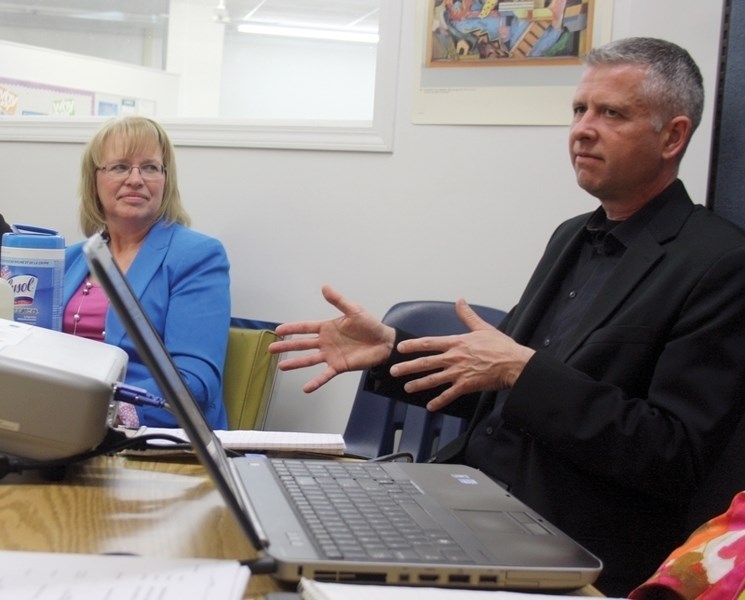There’s a stigma attached to Outreach programs like the one at R.F. Staples School that such extensions of the public school are basically where they send their unwanted students.
However, a more accurate way to describe the Outreach program is that it offers an alternative to students who have difficulty learning in a public school environment due to personal pursuits or financial, emotional or physical challenges.
“I can’t stress enough the importance of Outreach,” says R.F. Staples principal David Garbutt. “This is not a dumping ground for kids. It’s absolutely not. It’s a very good place for kids.”
Pembina Hills trustees learned more about the Westlock Outreach program during their meeting last Wednesday, which was hosted at the Outreach building along 107 Street.
Garbutt said they have 80 students accessing Outreach, noting that many work part-time or even full-time.
Westlock Outreach is staffed by one teacher, Heather Ross, along with program assistant Ruth Lefebvre.
Ross’ position is as an 0.8 FTE teacher; although she spends most of her time at Outreach, she goes back to R.F. Staples to teach some art programs.
However, Garbutt indicated that Ross will be moving to a full-time position next year, due in part to the fact that Outreach School generated an operating surplus this year for the first time.
“What it tells me is that the kids are generating credit enrolment units (CEUs),” Garbutt said, referring to the method that Alberta Education uses to distribute funding to schools for their high school programs.
Ross indicated Outreach accepts both junior and senior high students, noting that they had one Grade 7 student the year before and some Grade 8 and 9 students this year.
Garbutt said he considers Outreach to be an extension of R.F. Staples. In fact, many students go back and forth, completing a semester and then going back to R.F. Staples.
“Their kids are our kids. The door is always open, either at R.F. Staples or here,” he said, adding that they consider transfers between the two schools at the end of each semesters.
Some students also have a blended program: for instance, they take mechanics all afternoon at R.F. Staples and then return to Outreach.
Because it doesn’t operate like a conventional school, Outreach can offer individualized programs to its students, many of whom Garbutt says probably wouldn’t be going to school without Outreach because they have difficulty with a structured environment.
There are students who are young parents and others who are working to support themselves, he said.
Some students are athletes or have other personal pursuits that don’t fit with a regular schedule; the board heard a report from one girl who works several different jobs and takes care of a number of animals.
Other students have chronic illnesses that take them out of school for long periods of time, and some have been bullied at other schools and can’t function in that environment any more.
Ross added there are also students who are getting back into school after a disruptive event like a move or the divorce of their parents.
Ross recalled one student who switched to Outreach because she was suffering from anxiety and depression and found the public system too hard to handle.
Quoting the girl’s answers to a survey, she said, “ ‘Outreach is a great place for students to continue getting the education they need in a different way … If Outreach was closed, the kids who need to get work done would have nowhere to go.’”
Garbutt noted they also get referrals from agencies like mental health and AADAC (Alberta Alcohol and Drug Abuse Commission).
When the new School Act takes effect, Garbutt indicated they will likely have students over the age of 18 enrolling at Outreach.
Ross noted she collaborates a great deal with the Barrhead Outreach program and the teacher there has been instrumental in creating programming to help students achieve.
Garbutt noted that Outreach program has access to the same services at R.F. Staples, such as their comprehensive student services department.



